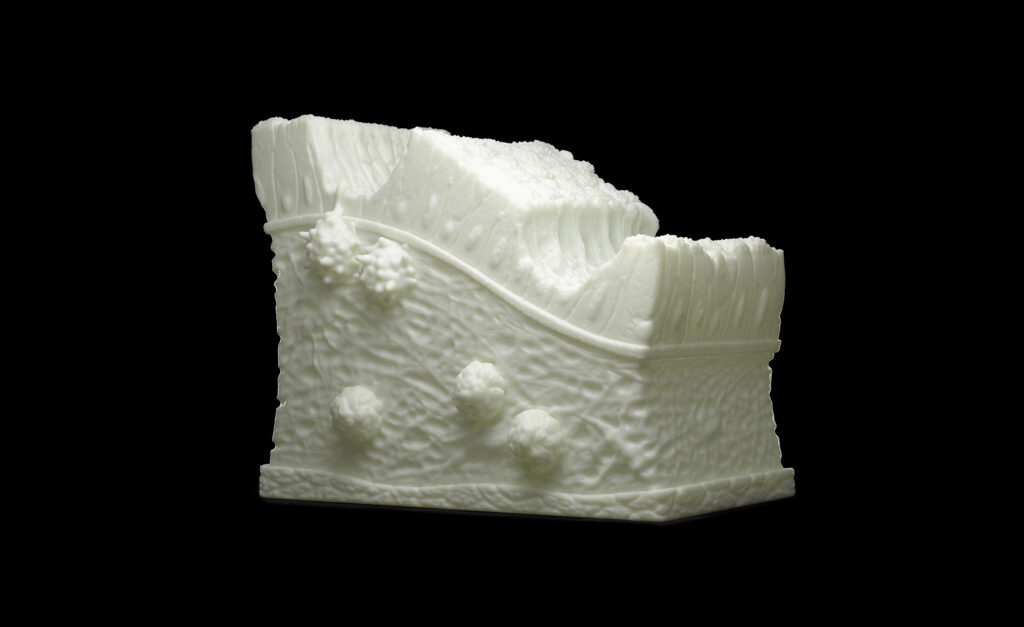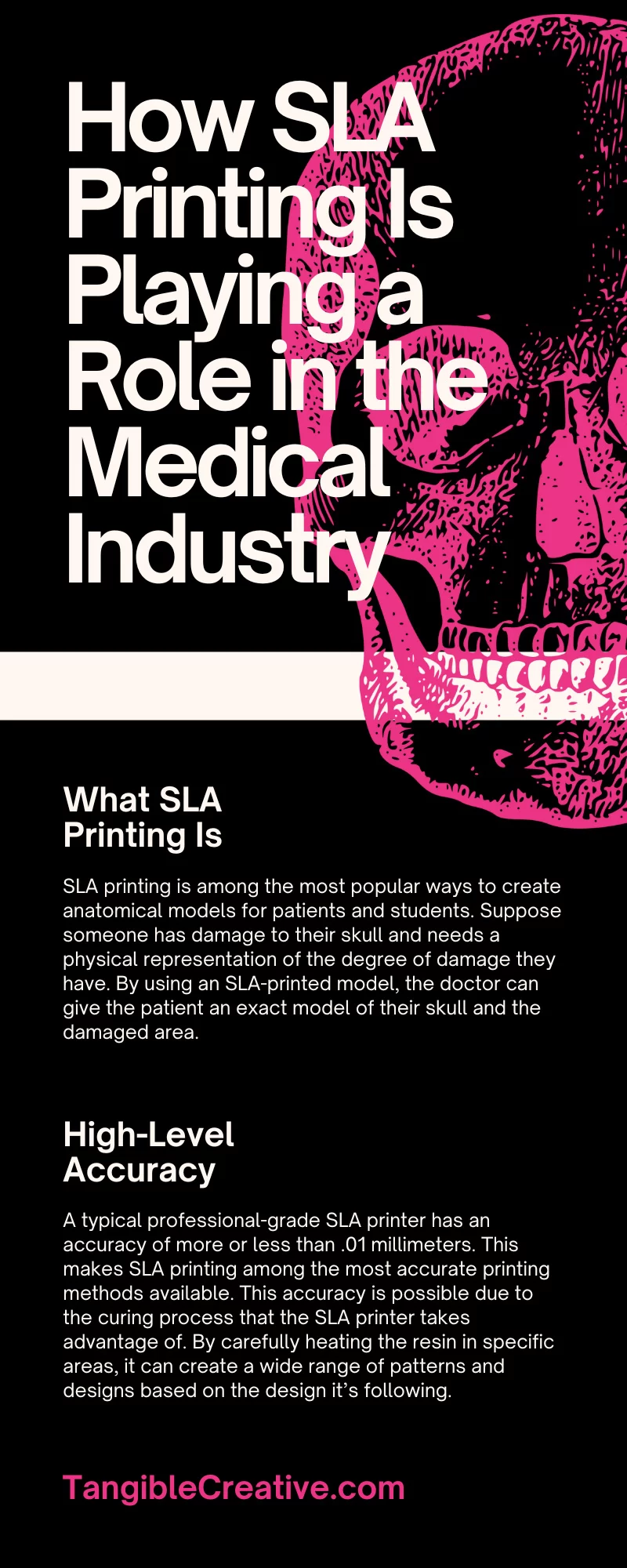
People are constantly innovating the medical industry to create the most efficient and safe tools for patients. While the products in this field are diverse, methods such as 3D printing have come in handy for creating numerous tools on a different mass-produced scale. SLA printing, or stereolithography printing, is among the most popular printing processes in the medical world. You can use SLA printing to create everything from various types of screws to place in the body to detailed anatomical models. To further emphasize its importance, it’s good to know how SLA printing is playing a role in the medical industry.
What SLA Printing Is
Before diving into the benefits stereolithography printing provides to the medical industry, it’s important to know how it works. With most printing methods in the medical industry, specifically those that work with molds, tools, or anatomical models, the final product’s quality is the highest priority. By curing a photopolymer resin and stacking the cured layers of that resin on top of each other, the printer can build items from a single vat. This additive process allows printers to create chemically bonded products that show exact specifications.
SLA printing is among the most popular ways to create anatomical models for patients and students. Suppose someone has damage to their skull and needs a physical representation of the degree of damage they have. By using an SLA-printed model, the doctor can give the patient an exact model of their skull and the damaged area. Situations like these are perfect for keeping everyone on the same page and lowering the level of uncertainty that some parties deal with during important operations.
High-Level Accuracy
A typical professional-grade SLA printer has an accuracy of more or less than .01 millimeters. This makes SLA printing among the most accurate printing methods available. This accuracy is possible due to the curing process that the SLA printer takes advantage of. By carefully heating the resin in specific areas, it can create a wide range of patterns and designs based on the design it’s following. In the medical industry, that pinpoint accuracy is essential for certain biocompatible applications.
In dental, getting as close to the patient’s original measurements as possible is imperative when creating molds for dentures or molded retainers. Whether you need to use or study these parts, SLA printed-items are some of the closest methods of getting a good copy. Plus, experts are always testing new materials and processes, so their uses will expand over time.
Quality Production Models
All 3D printed items in the medical industry require thorough cleaning and finishing to ensure the parts are up to standard. The last thing anyone wants is to notice unfinished patches on a high-quality representation of a body part or bone. One part of the process that helps gives SLA printed items their quality is the post-processing to get them to the ideal standard. This procedure involves actions like sanding, painting, and additional curing to smooth out any rough edges and turn them into a premium product.
These items are high quality, and their applications are wide-ranging. SLA printing allows clients to use high-resolution modeling to achieve the finest details in their order. The body is an intricate subject to replicate, and precision and quality are high priorities to focus on when it comes to the small features of a person’s anatomy.
Faster Printing Speed
Printing speed varies based on several factors that affect how efficient it is at finishing a specific part. However, SLA printing is still relatively fast due to using light sources to mold the piece into shape. Large models take up to nine hours to complete. After the printer has created the ideal foundation and shape, a resting process allows the object to settle and harden. This resting process takes anywhere from two to eight hours to cure and become sturdy enough for use.
It’s important to fast print important items to save businesses time and money. There are numerous occasions in the medical field where time is of the essence. While rush jobs aren’t typically normal for printing, the more efficient they are overall, the better they can serve the needs and demands of companies looking for them. Over time, these processes become more efficient as technology progresses. Seeing a decrease in wait time provides a good staging ground for medical companies looking to mass-produce certain tools or models.
Material Flexibility
It’s undisputed that SLA printing is a helpful and accurate means of creating tools and models for different medical industries. However, some of that credit is due to the materials it can use. The kind of resin needed to create a set of dentures differs from the kind used to produce a copy of your skull. The ability to use these various materials allows printers to take on different jobs within the medical field. This is great because the process of ordering and receiving doesn’t change due to using the same machines for the workload.
The standard resin is the one people use most often, and it comes with an affordable price and smooth surface quality for prototype models. Clear resin is good for transparent prints, while tough resin is great for putting the model through more ware than standard resin is capable of handling. Flexible resin is ideal for things that require rubber-like properties, and dental resin is best for dental processes and tools that rely on having a smooth and abrasion-free surface. Finally, water-washable resin is a simple means of creating a slightly sturdier resin. For objects that come into contact with water regularly, this resin is a boon when it comes to maintaining its quality and durability.
Using an SLA 3D printer allows companies in the medical industry to relax as they easily order tools and items they need for future patients and jobs. Knowing how SLA printing plays a role in the medical industry allows you to understand how important it is. The next time you look for a reliable means of producing important models and instruments, the SLA process is one of the go-to’s that’s worth considering.

